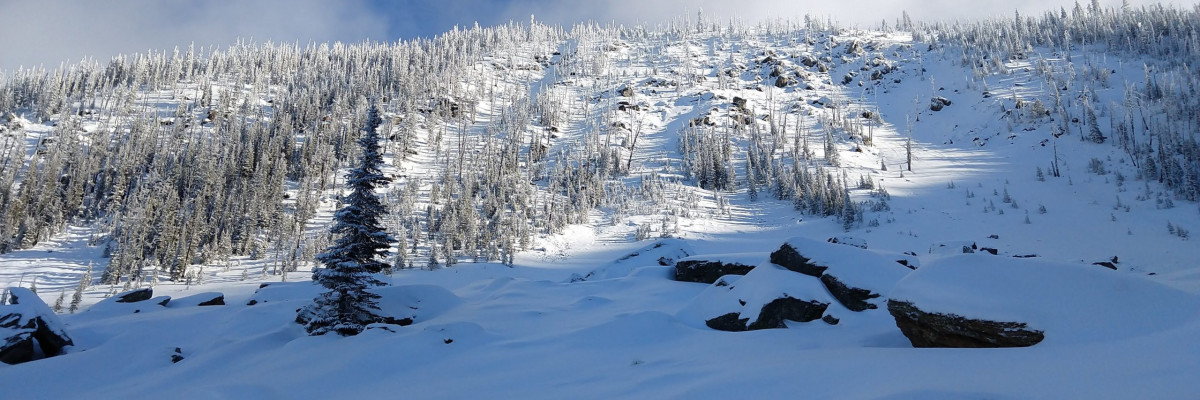An avalanche warning has been issued for the southern Mission, southern Swan, Rattlesnake, and southern and central Bitterroot mountains.The avalanche danger for the west central Montana backcountry is High. Human triggered avalanches are certain. The avalanche hazard is increasing with continued snowfall. Travel in avalanche terrain is not recommended. Avalanches may run long distances and avoid runout zones.
Happy New Year, this is Jeff Carty with an avalanche warning for January 01, 2020.This avalanche warning is valid for 24 hours. The avalanche warning will either be extended or terminated at 0600 on January 02, 2020. This danger rating does not apply to operating ski areas, expires at midnight tonight, and is the sole responsibility of the U.S. Forest Service.
Weather and Snowpack
The snow is here. What started lightly on Tuesday has intensified and is bringing considerable snowfall to the mountains creating dangerous avalanche conditions.
Up to 2.3″ of snow water equivalent (SWE) fell as up to 12″ of heavy snow last night, adding considerable stress to a weak snowpack. 1-3″ more SWE is expected by Thursday night, more than doubling the extra weight that has already been added to the snowpack. Strong westerly winds with extreme gusts are accompanying it, rapidly increasing the load on leeward slopes. Temperatures will increase Wednesday with rain possible above 6000 feet drastically increasing thaw instabilities.
Clear skies and cold temps Sunday night created extensive surface hoar on all aspects in the forecast area. Compounding this is a crust under the new snow that sits on near-surface facets. What this means is that there are multiple low strength, low friction sliding surfaces that the new snow is landing on.
The snowpack varies widely throughout the forecast area, from very shallow in the southern Bitterroot to near seasonal norms in the Swan. Depths are widely varied from bowl to bowl and aspect to aspect. Monday in the Rattlesnake, the size of the depth hoar on north aspects, under a 51-inch snowpack, was alarming, while some south aspects between 6000-7000 feet had as little a 1 foot of snow. All of it, regardless of depth, contains a combination of facets and crusts.
Despite the poor structure, we have not seen widespread avalanches, mainly due to a lack of slab and weight on top of it. As new snow accumulates, adding weight, the likelihood of avalanches rapidly increases. The incoming snow will consolidate into a slab quickly due to its density.
Storm slabs that slide on the surface hoar/new snow/crust/facet combo may step down to weak layers deep in the snowpack and trigger much larger slides.
High winds are creating slabs many feet thick in leeward and cross-loaded areas.
The weak structure of the underlying snowpack can not be trusted. Avoid all slopes over 30º and be very aware of overhead hazard. The surface hoar that the new snow is landing on can propagate long distances, and it may be possible to trigger avalanches from flat ground, above or below a slope. If deeper instabilities fail they may create very large slides. Early season conditions increase the likelihood of trauma if caught in a slide.
Our primary concern is storm slab avalanches. A very close second is persistent slab avalanches. Both may happen simultaneously.
Please, share any avalanche or condition observations on our public observations page.
Ski and ride safe.
























